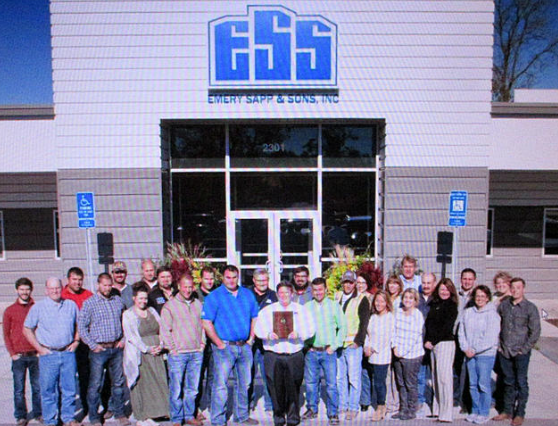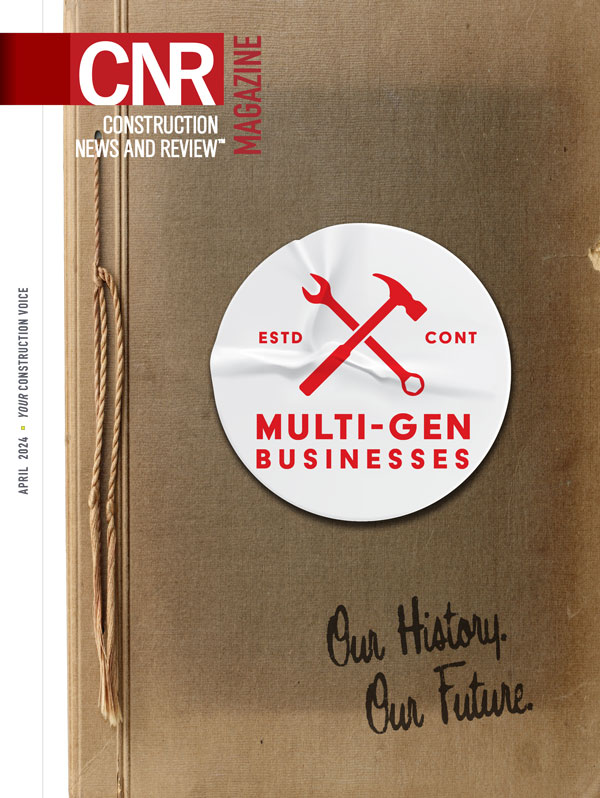Time is Now to Embrace Creativity in Industry Recruiting
AGC Estimates 40 Percent of Construction Workforce will Retire by 2030
By TIFFANIE REYNOLDS
Historically, the construction industry has struggled with talent shortages and recruitment. Most recently, the Associated General Contractors of America 2023 Construction Outlook Midwest Survey reports that 80 percent of firms cited difficulty in filling salaried and hourly craft positions. In addition, almost half believe that hiring and talent acquisition will remain challenging over the next 12 months.
Tim Mongeau, director of workforce development for the Association of Builders and Contractors, backed up these sentiments.
“There is so much work currently in play that employers would need more than a half million additional workers to meet the demand this year alone,” Mongeau says. “Even with this huge demand and wages that are higher than most other industries, contractors are having difficulties filling openings in all construction-related occupations.”
A recent survey of ABC members indicated 59 percent have classified the skilled labor shortage to be severe or very severe, primarily caused by the retirement of baby boomers. It’s estimated that by 2030, 40 percent of the construction workforce will retire.
Certain occupations are on track to have particularly steep worker shortages in the coming years due to retirements, according to Mongeau.
“34 percent of highway maintenance workers are currently 55 years or older,” he says. “For other occupations like sheet metal workers, electricians, building equipment operators and brick masons, more than 1 in 5 workers are aged 55 or older. Building inspectors face perhaps the sharpest worker shortages in the coming years, with 42 percent of the workforce 55 years or older and 13 percent over the age of 65.”
However, the situation isn’t all bleak. Thankfully, leaders across the industry are employing creative approaches to attracting talent to help bridge the gap, and it’s expected this trend will continue.
Focus on Next Gen and Non-Traditional
Steve Pinkley, regional director of the Mid-America Carpenters Regional Council, is feeling optimistic about attracting new talent into the industry. “We know that the old way of doing things – handing out business cards at career fairs – doesn’t work anymore. Today’s recruiting fairs are now interactive events with videos, simulators and hands-on games that give young adults a feel for what an actual carpenter, welder, scaffolder, etc. does.”
“We know there has been a decline in first-year students, most concentrated at four-year colleges, public and private,” Pinkley adds. “Last September, the National Student Clearinghouse Research Center reported enrollment of this group fell 6.1 percent at public four-year colleges and 4 percent at private nonprofits.”
This translates to a great opportunity for recruiting for tradesmen. Pinkley says.
“College tuition continues to skyrocket, pushing it out of reach for many. Too many kids have found that college was an expensive choice and hasn’t provided the kind of career opportunities they expected. They’re receptive to the message the Carpenters and other labor unions are pitching, it’s just a matter of reaching them early and often.”
Speaking of early, Mongeau says that the ABC has gotten that message loud and clear. “An ABC member has written a children’s book called Grit Leads to Greatness to help introduce and attract young kids to the construction industry. ABC chapters have presented the book in local schools, reading it aloud to students in the classroom.”
The ABC Illinois chapter also created the Community Builders program. Mongeau says, “By bringing free training to those who face barriers to employment, ABC Illinois is expanding the talent pipeline and rehabilitating communities and families.” The chapter has partnered with Project HOOD, the Woodlawn Community, the Village of Waukegan, the YMCA, the Village of Hazel Crest, Revolution Workshop, the Safer Foundation and the Fuller Center for Housing to enroll and upskill young people between the ages of 18 to 30 in a pre-apprenticeship training program.
Targeting non-traditional students through high schools, military, and veteran organizations and reentering citizen programs helps to ensure contractors are finding the best possible candidates.
“A good example,” says Mongeau, “is ABC Empire State chapter’s engagement with Fort Drum in its Career Skills Program, which helps active-duty military members move into civilian careers in construction, mining, cybersecurity and logging, among other industries. The Empire State chapter program offers participants a six-week construction training program fully funded by the chapter.”
No matter the program or the organization who is spearheading it, one thing remains clear. The industry’s best and brightest minds are committed to solving its talent shortage while even setting developing best practices for other industries, too.
Fresh Content
Direct to Your Inbox

YOUR CONSTRUCTION VOICE IN ST. LOUIS AND BEYOND
Join CNR Magazine today as a Content Partner
As a CNR Content Partner, CNR Magazine promises to support you as you build, design and engineer projects not only in and around St. Louis, but also across the U.S. CNR is equipped and ready to deliver a dynamic digital experience paired with the top-notch, robust print coverage for which you’ve always known and respected the magazine.






